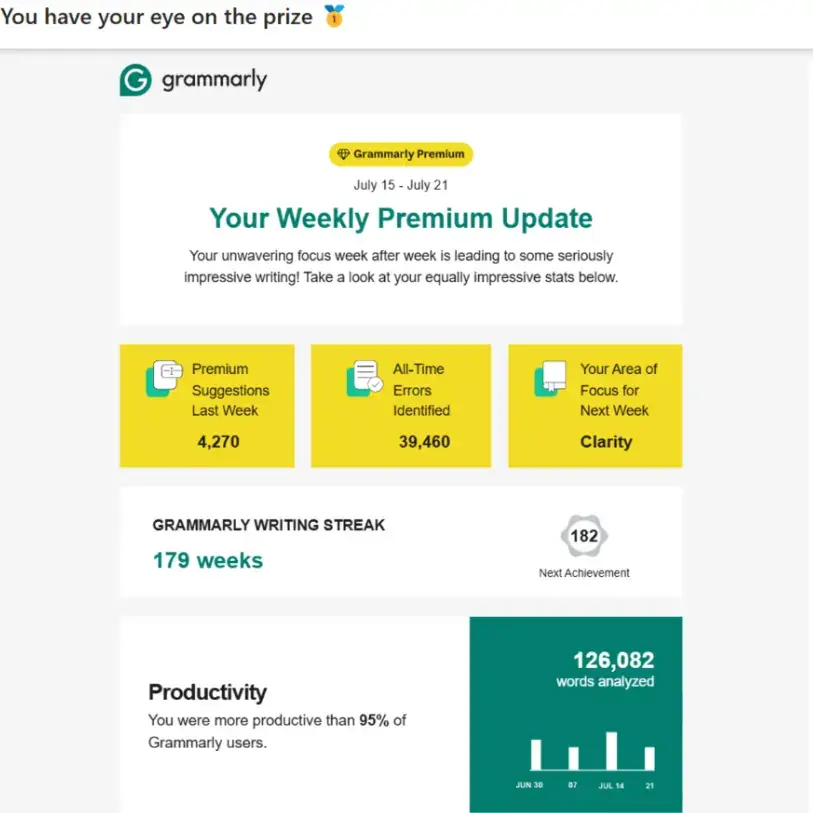Think of digital marketing campaigns as your strategic lever for success online. While they often take many forms (such as email campaigns or PPC campaigns), the goal of all these campaigns remains the same: To help you attract leads, increase brand visibility, and convert prospects into buyers.
Simply put: Think of them as your roadmap for turning digital chatter into business wins. However, marketing campaigns can only achieve the desired results if you are strategic with your efforts and goals.
On that note, we’re here to provide you with a few strategies, tactics, and examples of digital marketing campaigns that will help you stand out from the crowd.
One additional factor worth mentioning is the growing importance of ad networks for publishers. These platforms act as intermediaries between advertisers and website owners, allowing businesses to reach highly targeted audiences while enabling publishers to maximize ad revenue.
For marketers, integrating ad networks into campaign strategies means gaining access to premium placements, advanced targeting options, and data-driven insights that enhance ROI.
For publishers, these networks ensure that ad inventory is monetized effectively without compromising user experience.
In essence, choosing the right ad network can significantly amplify the overall impact of a digital marketing campaign.
Article Shortcuts:
What is a Digital Marketing Campaign?
A digital marketing campaign is a strategic plan to promote a business online and guide customers through the sales funnel (i.e., brand awareness, consideration, conversion, and loyalty). It can take many forms, including:
- SEO (search engine optimization)
- Social media marketing
- Content marketing
- Email marketing
- Paid media
Each element serves a unique purpose within the campaign, and together, they work towards a specific goal, such as increasing conversion rates, driving website traffic, or improving brand visibility.
While a digital marketing strategy inherently focuses on online channels, their influence isn’t confined to the digital realm. In fact, the effects of a well-executed digital strategy can extend beyond the screen and into the physical world.
For instance, targeted online ads and promotions can drive more foot traffic to brick-and-mortar stores as customers become aware of in-store offers or exclusive deals they discovered online.
Types of Digital Marketing Campaigns
Digital marketing campaigns are usually defined by a marketing goal (e.g., lead generation or brand awareness). Once you decide that, you leverage different digital marketing channels and strategies to achieve the goal.
However, for the most part, you can easily define digital marketing campaigns into the following categories:
- Influencer/affiliate marketing campaigns
- PPC (pay-per-click) campaigns
- Content marketing campaigns
- Email marketing campaigns
- Social media campaigns
- SEO campaigns
Marketers usually set KPIs (key performance indicators), buyer personas, SMART goals, and metrics to understand how customers interact with their campaigns and track their performance.
7 High-Impact Digital Marketing Campaign Strategies
Now that we’ve discussed what a digital marketing campaign entails, let’s explore the top strategies and tactics we can use to achieve our business goals.
1. Understand how to talk to your target audience
Marketers preach “relatability” as the gospel for a reason. If you can speak the language of your target audience and are authentic with and relatable to them, you can achieve the desired results.
On that note, here are a few ideas you can consider to learn how to talk to your target audience:
- Leveraging social listening tools: Tools like Sprout Social, Keyhole, Hootsuite, etc., keep track of brand mentions on all social media channels and can gather insights into industry trends and audience sentiments.
Utilizing advanced tools can help you analyze competition with social listening, providing deeper insights into industry trends and competitor strategies.
They can also monitor conversations surrounding your competitors and your niche, allowing you to analyze competitors, identify key influencers, and manage crises/negative mentions at a glance.
- Being active in places where your customers hang out: Often, target customers will hang out in certain places (e.g., Facebook groups, Slack channels, subreddits, or industry events) where you can participate, too.
Even if you don’t engage in these spaces regularly, just being present and an active listener there will allow you to understand how your customers talk (aka, what phrases, lingo, jargon, etc. they use).
Again, it’ll also help you identify organic influencers who your customers look up to.
- Talking to customer-facing teams: Customer-facing teams (e.g., sales or support) will often provide insights into the pain points, interests, questions, concerns, etc., surrounding your product that your existing customers or potential customers have.
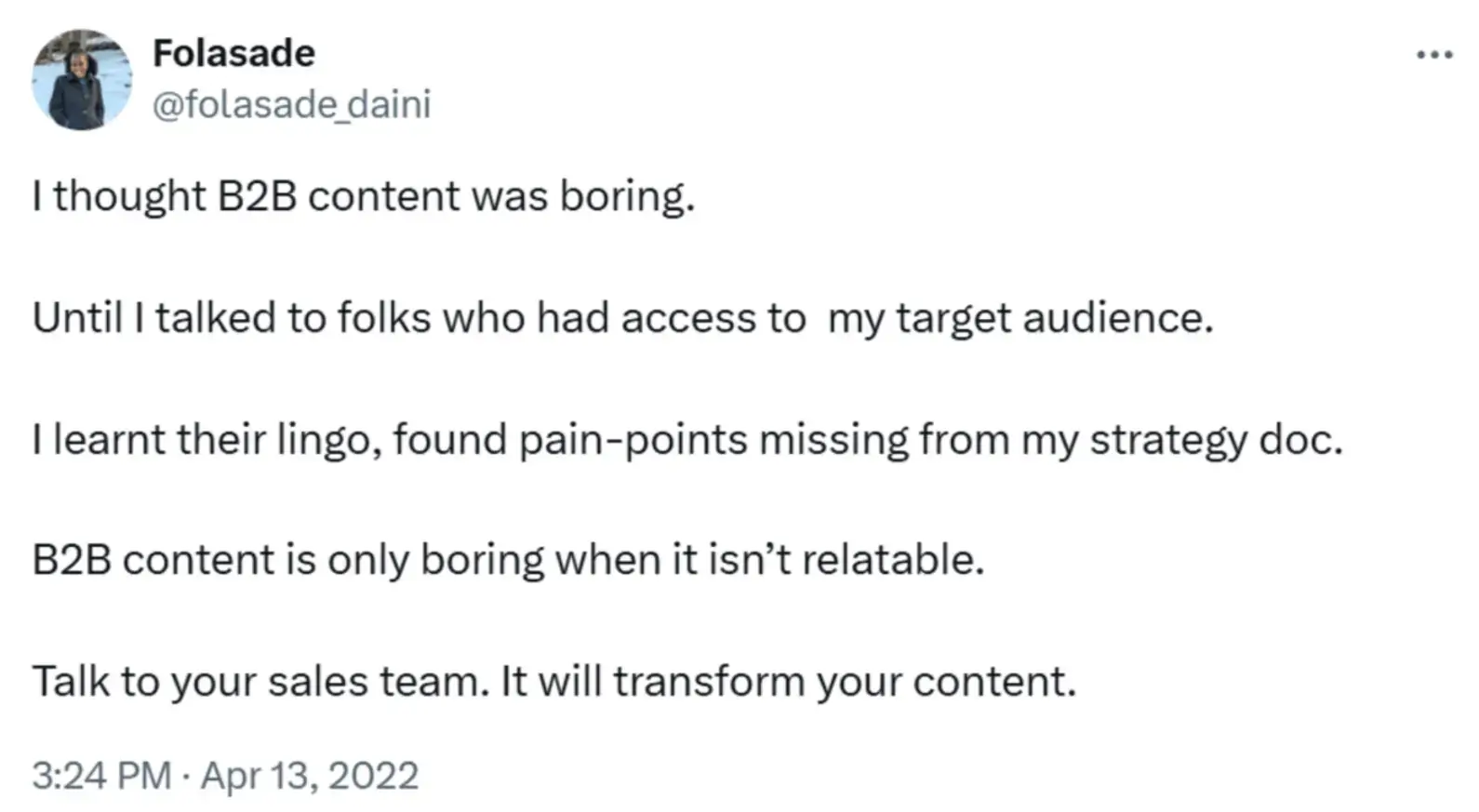
Source: X
Once you have a better handle on how your customers talk and interact, it’ll also help you fine-tune your marketing goals, segment your audience better (based on their interests), and improve customer experience.
2. Narrow down buyer channels
To make any digital marketing campaign successful, you must be strategic about your messaging and buyer channels.
For example, while several social media platforms exist, which channels have the best audience engagement, metrics, and ROI (return on investment)?
Another example: Do your customers prefer to interact with you through social media posts, newsletters, visual media, podcasts, or blog posts? A digital marketing course can help you master these strategies.
Once you’ve identified those channels, it makes sense to prioritize the channels with the most impact.
If you have a leftover budget, you can also consider repurposing your content from one format to another (e.g., podcast insights into blogs).
3. Keep up with trends and audience interests
In marketing, trends and interests change at the tip of a hat.
If you’re a marketer, those trends and interests should inform your content strategy. That way, you create personalized and intent-driven content your readers want to engage with.
For example, with the chatter of Ozempic being so popular these days, Henry Meds noticed a spike in the queries surrounding the topic. So, they started writing content on alternatives to Ozempic to keep up with audience interests and increase website traffic.
Similarly, this marketing tactic has helped out other brands, too. For example, Greta Maiocchi, the head of marketing at OPIT, shared an insightful observation with us:
When they noticed prospective students were more engaged with data science topics on their blog, they catered to email campaigns centering on Data Science degree options, their demand, and potential career trajectories while also ensuring strong email deliverability to maximize engagement. This unique approach led to a 30% rise in click-through rates and subsequent admissions.
In addition to appealing to audience interests based on their niche or age, you can also consider geo-targeting your campaigns to appeal to the interests of a particular demographic.
For example, when Travis Taborek was working as a content specialist for CharlieHR, his challenge was to get their content ranking within several months of publishing in a very crowded and competitive niche.
Rather than appeal to a global market, they tailored their content to the niche target audience of HR professionals and recruiters in the United Kingdom, which made content much more relevant to them.
According to Travis, that, more than anything, is what led to 3x trial sign-ups.
4. Make data-driven decisions
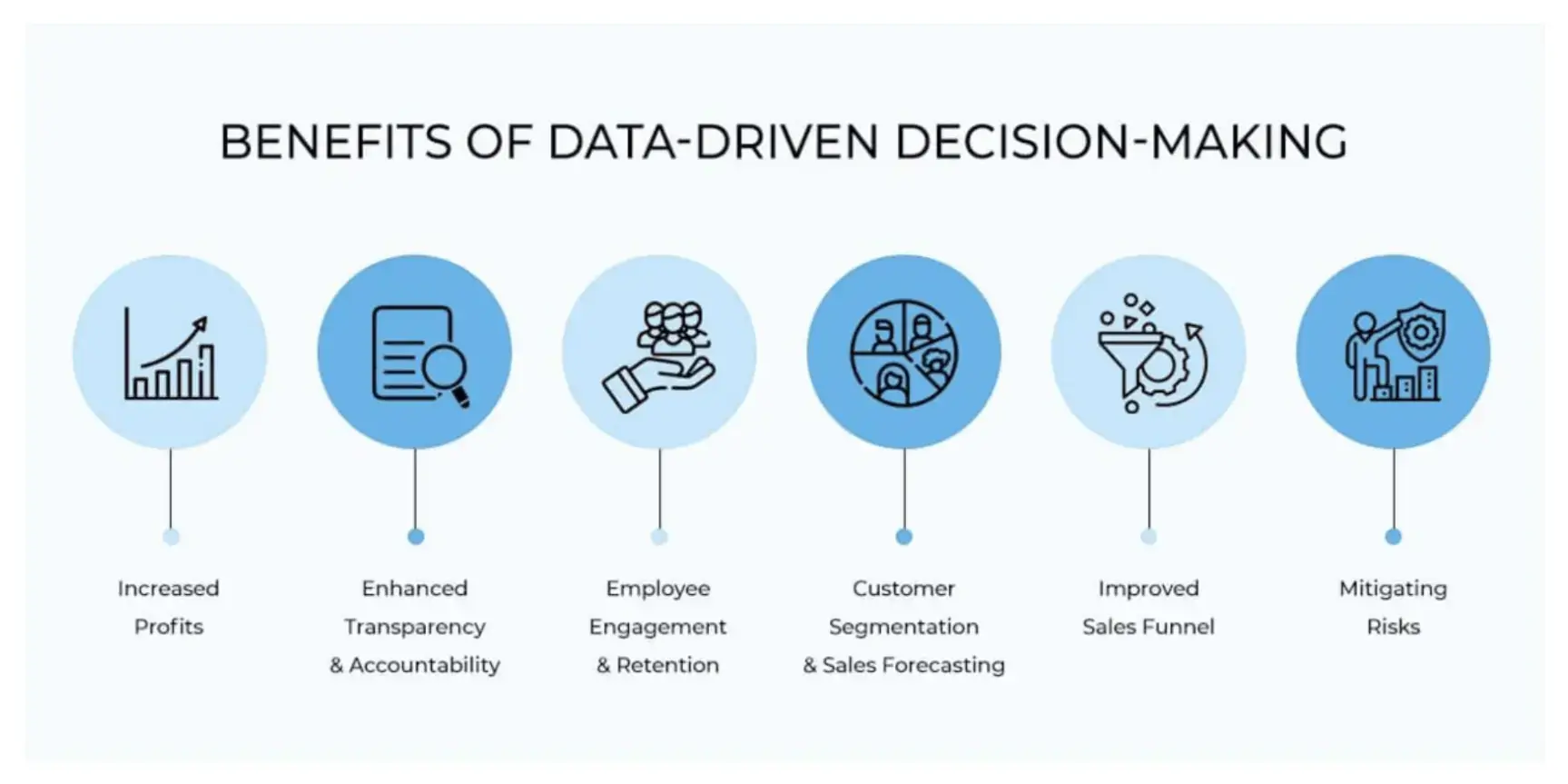
Source: FILECENTER
The charm of online marketing campaigns is that you can easily get measurable results, which often become difficult to attain when working on a traditional offline campaign. These insights later also help you make data-driven decisions.
You could use the existing insights from your CRM and marketing tools and run A/B tests to see how your landing pages, CTAs, and messaging are performing. For example, testing different subject lines or content layouts using email automation can provide valuable insights into what resonates best with your audience.
Here are some other ideas to consider:
- Testing out different facets and elements of your campaigns for different marketing goals (e.g., you could use solutions like lead scoring models to find the ideal leads or leverage predictive analytics to forecast future trends and customer behavior).
- Employing website analytics to track and analyze metrics such as website traffic, user behavior, and conversion rates. At this stage, you can also use heatmaps to find how your audience reads your content.
- Leveraging marketing automation tools alongside analytical solutions like Google Analytics or Facebook Insights to find micro-trend trending keywords and create moment marketing campaigns.
5. Don’t forget to retarget
Not creating a retargeting campaign is like leaving money on the table. Since prospects have already shown interest in your product and offer, it makes sense to target them once more to close the deal.
In fact, retargeting campaigns have helped out well-established brands like The Telegraph, so they can most definitely help medium and small businesses, too.
Arham Khan, the founder and CEO of Pixated Agency (a digital marketing brand that creates marketing plans and strategies for companies like The Telegraph), says:
“Effective retargeting strategies play an important role in guiding consumers down the funnel. Retargeting campaigns based on user engagement and behavior across channels helped us boost subscription rates by 215% for The Telegraph.
Implementing well-timed follow-ups based on specific triggers, such as cart abandonment or content views, helped us capture and convert high-intent prospects.”
6. Focus on interactive, engaging content
Let’s face it: We regurgitate much of the content online (or just make it plain ole’ boring). And matters get even worse if you add the blatant use of copy-pasted AI work into the mix (which some brands do).
To truly connect with your audience, humanize AI content and make it more engaging, interactive, and high-quality. This will ensure that your prospects find value in what you share rather than scrolling past generic or robotic writing.
In fact, the stats and studies agree with this statement. A 2022 study found that brands that leveraged interactive content over static content saw a 94% increase in content views. Plenty of other studies attest to the same.
On that note, here are a few ideas you can consider to create interactive content:
- Allotting some budget to interactive content materials like videos, quizzes, or AR/VR content (e.g., brands like Jimmy Johns started running campaigns on the metaverse near the COVID-19 pandemic).
- Integrating helpful resources like checklists, infographics, podcast links, interactive elements, etc., within your blogs and written content. You could even use the best QR code generator to create scannable codes that lead to additional interactive content or special offers.
- Create video testimonials, gamify your content, host webinars or Q&A sessions, run surveys or polls, and encourage user-generated content.
7. Keep it authentic
Have you ever heard of the Pratfall Effect? It occurs when customers like you more because you’re authentic and real with them, not perfect. That is, if you deliver a perfect presentation but fall on your face while coming down from the stage, customers tend to like you more.

Screenshot provided by the author
Elisa Montanari, the head of organic growth at Wrike, shared her thoughts on the importance of authenticity and happy accidents:
“Sometimes, you run into happy accidents, like inadvertently sending an email with the subject line “Test” or a campaign email featuring the wrong product line to users, followed by a “Sorry…” email correcting the mistake.
In both cases, the open rates tend to be inordinately high compared to the average because they capture people’s attention. Our human instinct is to be curious when we see someone make a mistake.
I don’t recommend making intentional mistakes in your marketing campaigns, but when you do, embrace them and intensify your efforts to correct them.
Making mistakes is undeniably human, and when you do so and genuinely attempt to rectify the situation, it can enhance your brand and make people take notice.”
Suppose you’re planning on using the same approach (aka, running on happy accidents on email).
In that case, we recommend getting a domain email such as yourname@yourbusiness.com. This will help you build trust and establish a professional image while also being authentic.
Another example: When Zendesk and Dollar Shave Club created highly funny, relatable, and authentic campaigns (“I Like It When He Gives Me The Business” and “Our Blades Are F***ing Great,” respectively), their brand awareness automatically went higher!
Iterating on Your Digital Marketing Campaign
We previously mentioned that trends and customer behavior change rapidly in the marketing industry. This means your existing marketing campaigns need to change with them, too, and that’s where iteration comes in.
Here’s the step-by-step process you need to follow to iterate on your campaigns:
Step 1: Set up marketing goals and decide which campaigns you’d like to iterate on (and why).
Step 2: Zoom in on which elements require changes and A/B test out different variations to see which variation your customers like best.
Step 3: Make the changes, monitor your performance, and keep iterating your future campaigns!
Digital Marketing Campaign Case Studies
Case Study #1: SEO (Zapier)
Even though Zapier doesn’t offer do-follow links or leverage commonly used SEO tools like Clearscope, Frase, SurferSEO, etc., it’s still got a domain rating of 91, more than 11 million backlinks, and coveted mentions from SEO powerhouses like Ahrefs.
And this is for a simple reason—Zapier’s SEO campaign is pure genius (to gain organic traffic), and we say this because of the following:
- It’s cannibalizing the keyword rankings of all SaaS brands because its USP is an automated workflow tool that connects multiple SaaS businesses. (Note: understanding how keyword cannibalization impacts rankings can help improve the organic visibility of your own content.)
- It uses people-first narratives from people with topical authority, following the guidelines set by Google’s E-A-T algorithm.
- It pitches products through the “backdoor,” as SEO experts call it, by showcasing possible automation you can do with the app (this also helps them gather keyword mentions).
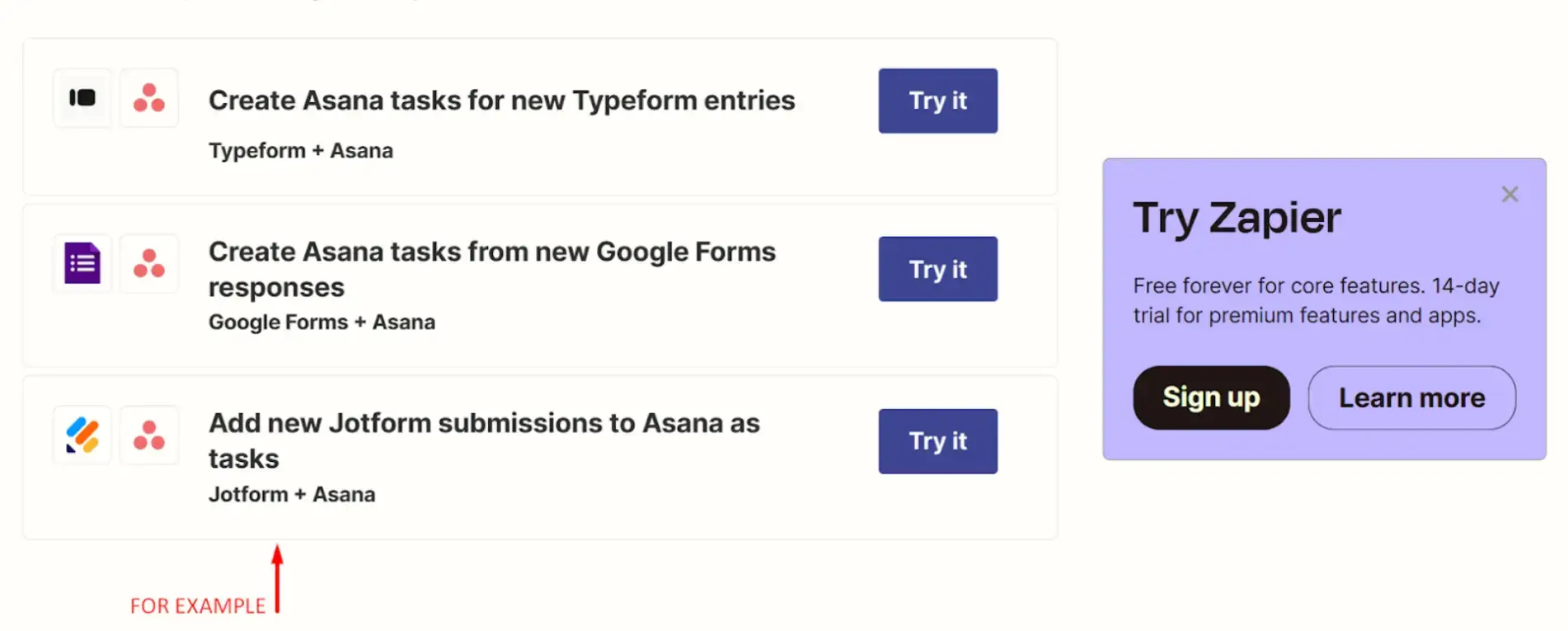
Source: Zapier
- It has an excellent inter-linking strategy.
Case Study #2: Social media marketing (Duolingo)
We all know and love the gems that have come out of Duolingo’s social media pages. From iconic moments like these:
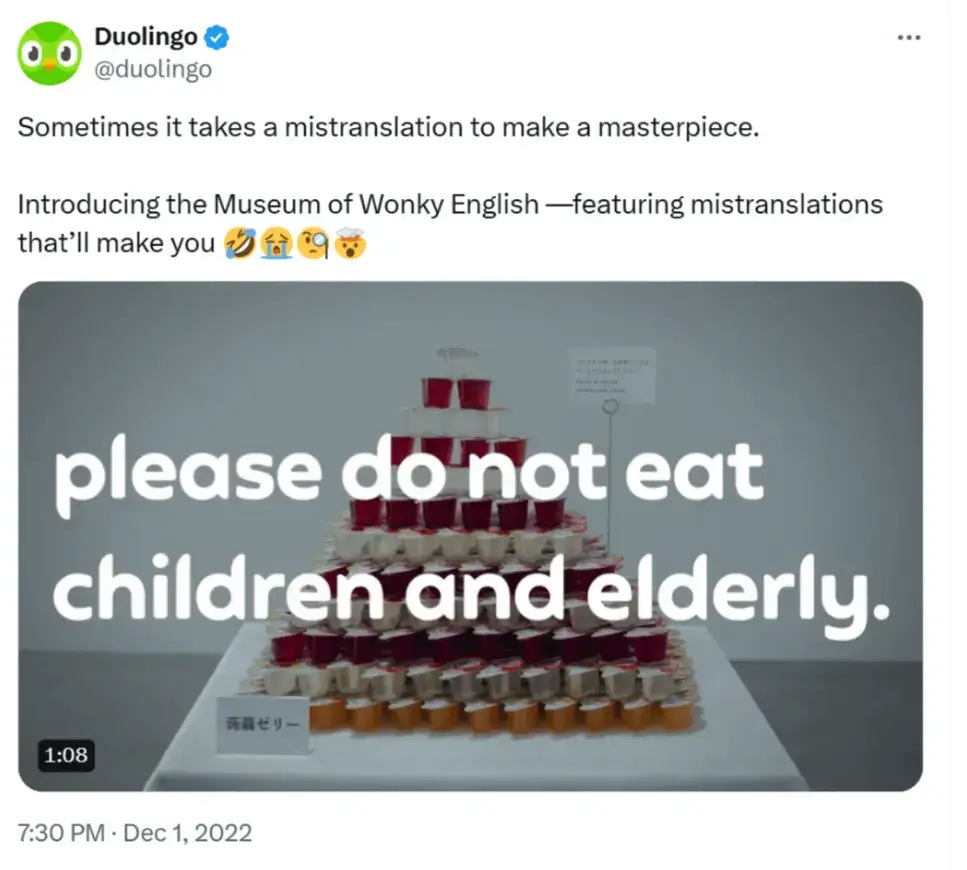
Source: X
To other moments like these:

Source: LinkedIn
Duolingo’s social media strategy (and the social media manager behind it, Zaharia Parvez) has received a lot of appreciation and attention from marketers because the app grew from 50k to 11 million followers, and here’s what makes the owl stand out:
- It uses an unhinged, quirky approach when it comes to social media to relate to its audience.
- It leverages trending faces and topics to stand out (e.g., its partnership with Dua Lipa or advertising on the Super Bowl).
- It uses a platform-native language (aka, it uses fun and quirky tones on its social media apps and uses a helpful and easy-to-understand language on its website). It also creates exclusive content for each social media app instead of repurposing the content.
- It focuses on user engagement (such as replying through comments) just as much as on the content it produces.
Case Study #3: Email marketing (Grammarly)
Grammarly’s email marketing campaign encourages user retention and customer engagement by providing customized analytics and insights into the customer’s activity weekly. (It's like Spotify Wrapped, but on a weekly basis.) For example, here’s what an email from “Grammarly Insights” looks like:
